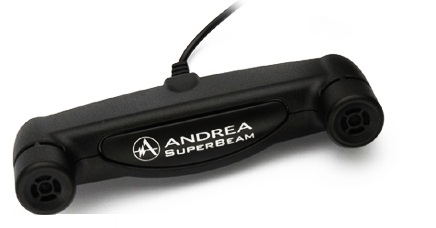What is a Microphone Array?

A Microphone Array (or array microphone) is a microphone device that functions just like a regular microphone, but instead of having only one microphone to record sound input, it has multiple microphones (2 or more) to record sound.
The microphones in the array device work together to record sound simultaneously. Microphone arrays can be designed to have as many microphones in them as needed or wanted to record sound output. A common microphone array, however, is a 2-microphone array device, with one microphone placed on the left side of the device and and the other placed on the right side. With one microphone on each side, sounds can be recorded from both the the left and right side of the room, making for a dynamic stereo recording which mimics surround sound. When played back on a stereo headset, the separate left and right channel recording are distinctly different and noticeably heard.
The most important characteristic that must be present in microphone array devices is microphone matching. All of the microphones in an array must be similar and closely matched and in some aspects exactly the same in order for an array to pick up good recording. Otherwise, you can have a microphone array where one microphone has much higher gain than the other, or the microphones could be out of phase so that one microphone records before the other, or the problem where one microphone picks up sounds from all directions while the other picks up sounds from only a certain direction. These are all unwanted in audio applications and are some of the horrible consequences that can ensue when microphones in an array aren't carefully chosen. Therefore, the microphones must all be similarly matched and meet a number of specifications so there are no uneven sound recordings.
Three aspects to consider for microphone matching in microphone arrays are
directionality, sensitivity, and phase.
Directionality- The directionality of a microphone is the direction from which it
can pick up sounds.
Microphones are made to pick up sound from certain
directions when spoken into. Some microphones are made to only pick up
sounds from one direction, unidirectional
microphones. Other microphones are made so that they can pick up sounds from all directions,
omnidirectional microphones.
When building an array microphone, all the microphones must have the same directionality.
Having one microphone pick
up sounds only from a certain direction and the other pick up sounds from all directions
would make for disastrous, imbalanced sound
recording. Unless there is some unique situation where this would be the case, this
is largely undesired. Therefore,
microphone arrays are always made with microphones of the same directionality.
Sensitivity- Sensitivity is another aspect that must match for microphone arrays.
Sensitivity
is the gain that a
microphone picks up when recording a signal. Sensitivity must be closely matched in microphone array devices, or else
one microphone will be louder than the other, producing imbalanced sound recordings.
This is why usually the
maximum sensitivity difference allowed in array microphones is ±1.5dB so that there is
no bigger than a 3dB difference
in microphone sensitivity of the microphones.
Phase- Phase is the last important aspect that must match for microphone arrays.
Phase is the degree line of reference for the time that a microphone begins recording,
meaning, it determines the time that all microphones in an array start and stop
recording. If microphones have drastically different phases, they will record signals at
different times. This will lead to unsynchronized recording. Again, this is largely
undesired.
It is desired that microphones record signals at the same time so that there is no
delay between signals. Just like sensitivity, there must be a maximum allowable tolerance for phase difference between microphones.
This difference is usually ±1.5 degrees to ensure that signals record at the same time, leading
to harmonized recording.
Microphone arrays are gaining increasing popularity in the audio industry because of the dynamic surround sound recording that they allow. There is literally no end or range to the number of microphones that they can use and how the sounds are synchronized to create dynamic recording. Some commercial audio devices use as many as 8 microphones to form a "listening beam" that locates and steers in on a talker to record speech. Others are strategically made so that they can create surround sound recording throughout a room, recording sounds as they occur in the direction from where the sounds originate. As new microphone arrays are designed and new applications made, we can only expect them to pick up more speed and carry more load in the microphone market.
Related Resources
What is a Directional Microphone?
What is a Shotgun Microphone?
What are Unidirectional Microphones?
What are Omnidirectional Microphones?
What are Bidirectional Microphones?
What are Cardioid Microphones?
